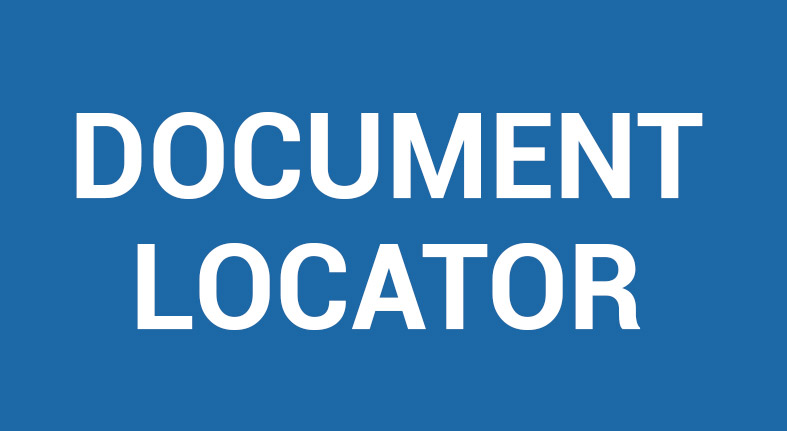Trust Land Office gets fast access to all the facts and makes smarter decisions using electronic document management
With over 1 million acres of land spread across 4,800 parcels under its management, the Alaska Mental Health Trust Land Office must have an effective land record system to manage resources. Through careful oversight of the properties, and their diverse resources, the Trust maximizes revenue for mental health programs in Alaska that help improve the lives and circumstances of Trust beneficiaries.
Paper files are cause for concern
Key to the Trust’s success is the ability of its staff to connect-the-dots between trends in the market and the resources in each unit of property. However, paper records presented a problem.
Historically, property records held in filing cabinets contained everything from location and resource descriptions, to photographic images in field reports. But as the volume of paper records grew, it became more and more difficult for staff to correlate information. Records had to be searched manually, and some information was held “in the heads” of employees. It was impossible to quickly retrieve information, and there was simply no way to search the actual contents of so many paper records and assemble related information.
Key decisions about land and resources were at stake, but with paper records in filing cabinets, the risk of important decisions being made without the benefit of all available information was becoming a serious concern.
What’s more, paper records could be easily misfiled and misplaced, documents were not secure, and it was a real challenge to safeguard all that paper against natural disasters like floods, fires, and earthquakes.
Side-by-side trials prove Document Locator is right solution
Recognizing a need, the Trust Land Office set about developing a plan for a better way to manage information that satisfied operational needs as well as structure information for use in development of a comprehensive, auditable, asset management plan. Key qualifiers were set right away, and at the top of the list were: affordability; ease of deployment; ease of in-house administration; and little to no reliance on outside programmers.
“More than 15 document management companies we spoke with said their system was easy-to-install, easy-to-setup, and easy-to-use, but we narrowed the list to just a few right away based on who were willing to prove their claim,” said Trust project manager Dennis Daigger. “In a side-by-side trial among our top-two choices, we chose Document Locator because it met all our requirements and was particularly easy to set-up.”
Connecting the dots for smarter decision-making
With Document Locator in place to manage files for everything from land parcels, to non-parcel related land activities, to administrative areas of the business, the productivity of the office saw immediate gains. Staff became more informed, and are now able to correlate information quickly to make faster, more informed decisions based on all the facts.
“Where we have converted project and land use authorization case files to digital documents in Document Locator, we now work smarter and more efficiently because everyone has all the information they need at their fingertips and can organize information to meet the specific objective at hand,” said Trust project manager Heather Weatherell.
The Trust began converting existing paper documents to text-searchable digital files first using Document Locator, and started managing new case files electronically going forward.
“The value of the scan module in Document Locator is absolutely staggering,” added Daigger. “In the process of scanning all our active case files to manage them strictly as electronic files, we had some documents that were copies-of-copies of the original and we were still able to index and search on obscure words in the text. It was almost 100% reliable and is an incredibly efficient way for us to capture documents and do searching.”
Inside the office, the staff use Document Locator to manage and organize many types of files that are common to just about any office, such as travel documents, budgets, personnel files, and more. However, it’s the information specific to the Trust’s core mission where Document Locator has been most appreciated. The on-demand accessibility of everything from land use authorizations, to land use planning files, to land project documents means that land resource staff can now quickly gather all the facts before making important decisions.
Even the smallest property details are readily accessible through content searching and file attributes (metadata). The system contains records of easements, letters of authorizations, licenses, sales, surveys, trespass case files, and more. Everything is tied together using lot ID numbers and other descriptive profile fields like location, parcel numbers, and resource types.
“Now, if for example we get a notice that there will be a zoning change, we have the ability see right away if we have any land that will be affected and make quick decisions,” said Weatherell.
Another key advantage for staff members is their ability to access information from remote locations through VPN connections. Staff can now access land documents whenever needed. Files no longer have to be retrieved by in-office staff and then copied, faxed, or shipped to employees, saving even more time and money.
Surprisingly, the Trust now finds that they are storing fewer documents because they have reduced redundancy of information. And much to their pleasure, staff are confident that they can always find a document when they need it.
Going geospatial
So what does the Trust Land Office plan to do next?
“During our deployment, an API was developed that demonstrated Document Locator’s ability to relate stored land documents with geospatial information,” said Daigger. “We’re looking forward to implementing this down the road.”
As the system grows, the Trust will be able to take even greater advantage of intrinsic values of properties – things like waterfront location, types of timber stands, and south-facing slopes (much desired in the northern state).
Daigger added, “We have to be smarter and more efficient. This is the purpose of the information system. This is the reason we use Document Locator.”
Learn more
Be ready for the next audit
Employee files under control
Structured project files
Automate business processes
Ready for a Demo?
Take the first step towards streamlining your processes and enhancing collaboration with Document Locator. Request a demo today and discover how our document control solution can help your organization.
Fill out the form to get started.




